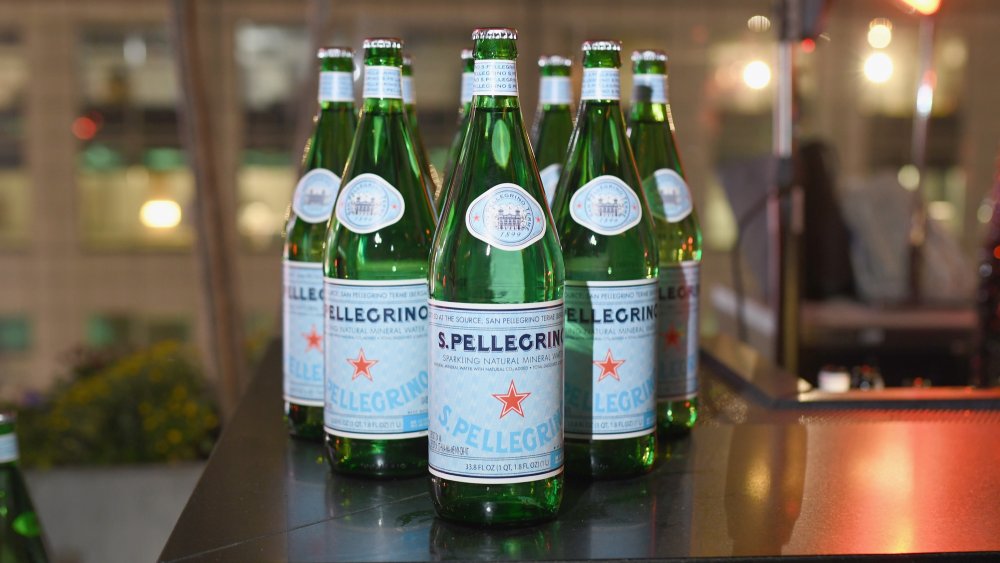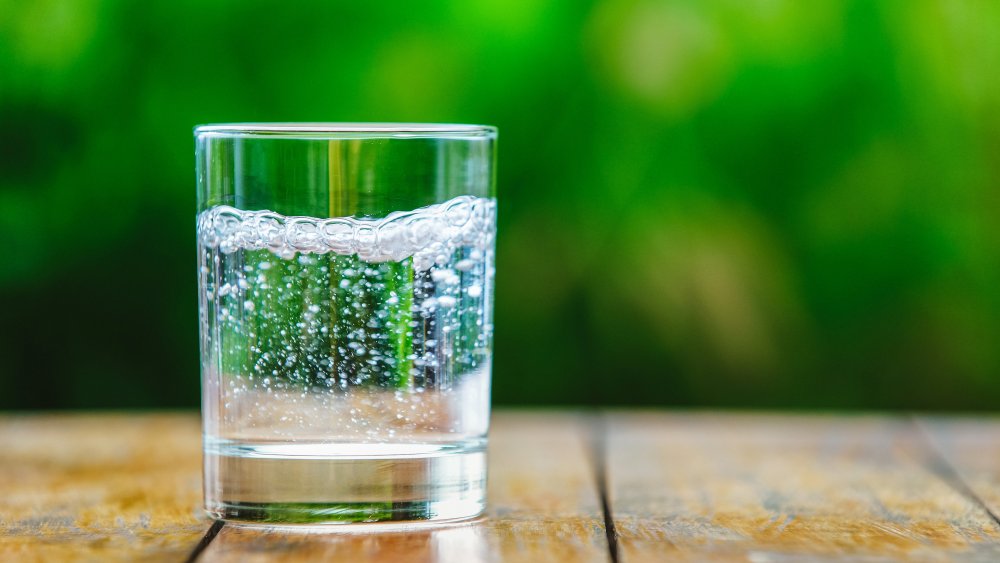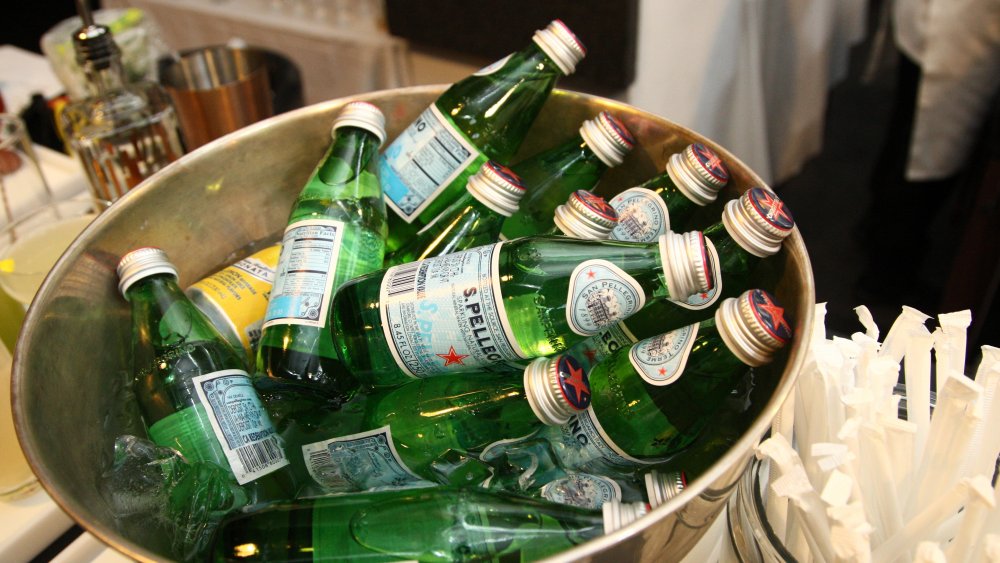The Untold Truth Of San Pellegrino
Before beverage aisles were proliferated with a sea of flavored sparkling waters like La Croix, Bubly, and AHA, there was one green bottle that's remained synonymous with bubbly hydration. Named for a town located high in the Italian Alps, the sparkling mineral water in San Pellegrino's green glass bottles has a fascinating backstory that dates back hundreds of years. San Pellegrino Terme, a small commune located north of Bergamo, Italy, has been recognized for its natural springs since the days of Leonardo da Vinci. Delish notes that San Pellegrino was a popular spot for Europe's monied class to relax and unwind with spa treatments featuring the town's unique water supply.
So what makes the water from San Pellegrino so special? According to Mental Floss, the water originates on the tops of the Dolomite Mountains in the form of rain and snow, from there it trickles down through the sedimentary stone of the Alps. The water takes roughly three decades to get from the tops of the mountains to the springs that flow through San Pellegrino Terme, and during that time spent in the stone, the water takes on natural minerals including potassium, calcium, sodium, and magnesium.
The first bottles of mineral water debuted in 1900
In 1899, the San Pellegrino company was made official and listed on the Milan Stock Exchange, and the first bottles of mineral water were produced the following year (via San Pellegrino). San Pellegrino didn't hesitate to dive into the international market, during that first year of production, 35,343 bottles were made and more than 5,500 of them headed out into the world outside of Italy for enjoyment.
Carbonation is a key part of the San Pellegrino experience these days, but back at the beginning of the 20th century, the mineral water was bottled flat. Bubbles were added to the equation when the folks at San Pellegrino found that carbonation was useful in preserving the mineral content. Unwilling to mess with the minerals that gave San Pellegrino its distinct qualities, a minimal amount of carbon dioxide was added to the water, resulting in smaller, gentler bubbles than other sparkling water brands. The newly carbonated take on the original was such as hit the company opted to discontinue their uncarbonated water completely in favor of the new sparkling formula (via Delish).
San Pellegrino began expanding their line of products in 1932
San Pellegrino began expanding its line of products in 1932 when owner Ezio Granelli rolled out Aranciata, a beverage made with the company's signature mineral water sweetened with a splash of fresh orange juice (via Mental Floss). From there a range of flavors was introduced featuring familiar fruits such as lemon, grapefruit, and clementine to exotic offerings including, Chinotto, made from the bittersweet chinotto orange, and Arancia & Fico d'India, a blend of orange and fico d'india, or prickly pear, which is the fruit of a Mediterranean cactus.
San Pellegrino got back into the still water game in 1957 when it purchased the Acqua Panna Company, whose water has equally noble roots in Tuscany. The historians at San Pellegrino explain that the source from which Acqua Panna is bottled was once owned by the powerful Florentine dynasty, the Medicis.


